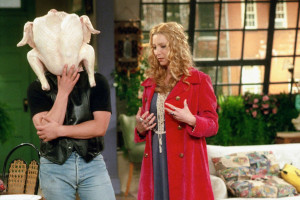WSJ Historically Speaking: How the Turkey Became the Thanksgiving Bird
This Thanksgiving, let’s spare a thought for the roughly 40 million turkeys whose destiny is inextricably linked to the fourth Thursday in November.
As a symbol of national pride and family values, the humble turkey has few rivals. But how did it edge out the competition to become the quintessential Thanksgiving dish?
Success was neither immediate nor assured. It isn’t clear whether turkey made it onto the menu at the original 1621 harvest-celebration meal shared among the Pilgrims and the Wampanoag. Wild turkeys were plentiful; the colonist leader William Bradford noted in his diary that “there was a great store” of them. But the only surviving letter about that meal refers to four men who went “a-fowling,” which could have meant anything from ducks to swans.
The tradition of Congress issuing a national Thanksgiving proclamation began in 1777, at around the same time that the Great Seal of the U.S. was being designed, and the turkey wasn’t a serious contender to be the symbol of America. The birds considered included the rooster, the dove and the eagle. In the end, the Great Seal committee accepted Charles Thomson’s 1782 suggestion of the bald eagle.
But two years later, Benjamin Franklin found himself wondering whether they had made a mistake: “I wish the Bald Eagle had not been chosen the Representative of our Country. He is a Bird of bad moral Character. He does not get his Living honestly…he is generally poor and often very lousy.” By contrast, Franklin wrote, the turkey was a “much more respectable bird…though a little vain and silly, a Bird of courage.”
Franklin’s halfhearted praise for the turkey marked a turning point for the fowl. During the 19th century, the turkey’s usefulness as a cheap source of meat for a large crowd made it increasingly popular. By 1869, the writer Harriet Beecher Stowe recalled in “Old Town Folks” the Thanksgivings of the past, “the turkey, and chickens…with all that endless variety of vegetables which the American soil and climate have contributed to the table.”
Yet even as the turkey began to rule the roast, it never achieved the iconic status of the wolf, the bear or the bison. One of the very few 19th-century American poets who found literary inspiration in the turkey was the folk-writer James Whitcomb Riley (1849-1916), author of the original “Little Orphant Annie.”
Riley produced the following gem: “When the frost is on the punkin and the fodder’s in the shock, / And you hear the kyouck and gobble of the struttin’ turkey-cock…O, it sets my hart a-clickin’ like the tickin’ of a clock,” which may have made other poets feel that nothing more could possibly be said about the bird.
Only in the 20th century did the turkey fly from the roasting pan into the fire of America’s imagination. If the 1968 Broadway hit “Promises, Promises” has mostly faded from memory, a baffling song-and-dance number from Act I, “Turkey Lurkey Time,” has found everlasting fame in ring tones and glee clubs.
In 1983, the turkey made history on the British TV game show “Family Fortunes.” A contestant used the bird to answer three questions in a row, including, “Name something people take with them to the beach.” But it was in the following decade—in season five, episode eight of the NBC sitcom “Friends”—that the turkey achieved legendary greatness. No one who watched Joey get his head stuck inside a Thanksgiving turkey would ever think of the bird in the same way again.

